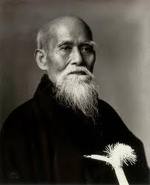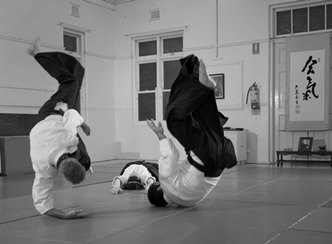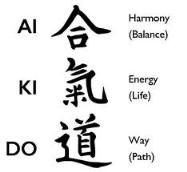Aikido is a Japanese martial art that was created by Morihei Ueshiba (1883-1969) after a lifetime of studying martial arts. Ueshiba (O’Sensei) studied a number of classical Japanese bujutsu (warrior arts) under noted masters of the day, including kendo (sword), jujutsu and judo. Ueshiba was a deeply religious man and throughout his life spent much time in study, prayer and meditation. After many years of learning martial arts with the aim of becoming an invincible warrior, he was moved to create a martial art based on non-resistance and harmony with the universe. He called this art Aikido.

Today there are many styles of Aikido, some soft and flowing, others harder and more unyielding, but all with the same principles and philosophy of meeting an attack with minimum force and extending ki to blend with the movement of an attacker.

“Aikido is a method of self-defense which can be used against any form of attack and – at its highest levels – a Discipline of Coordination, a ‘way’ of harmonising all of our vital powers. There is no attack in Aikido; i.e. the goal is merely to neutralise an aggression and render the attacker harmless, without causing any serious injury if at all possible. To do this requires skill, but even more, it requires ethical intention. The very word Aikido, in fact, contains the three elements which comprise the art: (ai), harmony or coordination; (ki), spirit or energy; (do), the method, the ‘way’.
Aikido and the Dynamic Sphere, An Illustrated Introduction by A. Westbrook and O. Ratti
A person who studies and practices Aikido correctly desires only to defend themselves without hurting others. To possess this attitude, one must achieve a very high level of integration of the powers of mind and body, the harmonious combination of physical means and ethical motives.”


